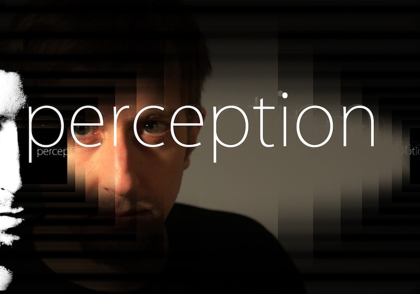As mentioned in my previous post, I had the pleasure of hosting two sessions recently at the TCS Innovation Forums in London and New York City. The sessions, which explored the need to prepare for the future, involved thought leaders, futurists, and various leaders across multiple domains. They were structured with several five-minute descriptions of forward-looking themes, and once context was set, a discussion with the broader leadership group was moderated. The sessions focused on education and awareness, rooted in a strong belief that leaders must prepare for and shape our emerging future.
This post will summarize the New York Session, which differed slightly from the one in London. While the London session painted a wide array of evocative future scenarios, the New York session explored several of the key technologies and enablers that will fundamentally shape and impact emerging scenarios. It wasn’t however a technology discussion. This engaging group of thought leaders provided eye-opening facts and focused on implications, both positive and negative. As in London, I opened the session with three key themes from my Expectation post: Acceleration, Possibilities, and Convergence; Here is a look at the insights that followed.
ARTIFICIAL INTELLIGENCE AND DATA: Anthony Scriffignano, PH.D. SVP, Chief Data Scientist, Dun & Bradstreet
Today artificial intelligence (AI) is top of mind. We are at a point of inflection. There’s an infinite and growing amount of data and it’s growing at a hyper geometric rate. Advances and availability of computing power now lets us do things that we couldn’t have envisioned 10 or 20 years ago. Together they are moving rapidly towards critical mass. They are accelerating and converging, bringing about the “adolescence of AI.” Why the term “adolescence”? Well, it’s kind of surly.  It doesn’t do exactly what we want it to do; doesn’t exactly know how to do what we’re asking it to do, and it tries to do it anyway.
It doesn’t do exactly what we want it to do; doesn’t exactly know how to do what we’re asking it to do, and it tries to do it anyway.
At the same time, we are challenged by changing definitions and inconsistent notions of evolution. We talk about artificial intelligence, but there’s no real intelligence. It’s quite simply a collection of algorithms, however we talk about them as if they are human.
We embody them with human capabilities, such as learning. They are not learning, they are curating. As these capabilities advance, we can’t keep using the language of the past. Today we’re beginning to see terms such as deep learning, deep belief, cognitive analytics, augmented intelligence – working alongside the human agent. Those are all good examples of new nouns and verbs that paint a true picture. However, it’s not just about the definitions. The technology is not evenly distributed, and key elements, such as agency, bias, ethics, explainability are not being effectively addressed. The cost of doing nothing, is not nothing here. There is some real work to be done, if the adolescent is going to grow up.
CYBERSECURITY: Paige H. Adams, Group CISO, Zurich Insurance
As we race towards a quantum future, the world is going to change drastically. In 1994, The MIT mathematician Peter Shor postulated that Quantum Computing would bring the end of encryption and those in the know believed it would be very far away in the future. Well, we’re on the threshold of it now. Our world is going to change drastically because encryption is going to be far different in a post-quantum world. It’s almost assured that the 2048-bit key RSA algorithm is going to fail, leaving us vulnerable.
AI and machine learning are key future technologies and will be instrumental in helping us defend ourselves. The problem is there’s a lot of money in cybercrime – three trillion dollars worldwide over the next several years through the illicit use of cyber resources and cyber-criminals are investing too.  They are employing AI at an alarming rate – to map target networks, to discover vulnerabilities, to emulate writing styles, to create fake personas. The list is endless and the security implications troubling.
They are employing AI at an alarming rate – to map target networks, to discover vulnerabilities, to emulate writing styles, to create fake personas. The list is endless and the security implications troubling.
The attack surface is expanding exponentially every day. As such, we need to think about things such as cryptographic agility. We need to think about how to intelligently employ AI, but we also need to focus on the basics – security principles are principles for a reason, they never change. They are enduring. The next 10 years is going to bring unimaginable change and we need to move to that future carefully and securely.
PRIVACY: Jack Shannon, Professor of Legal studies, Seton Hall University
What is privacy? Is it the right to be left alone? Is it the right to prevent people from prying into your personal life? Is it the right to avoid sophisticated surveillance? The great challenge today is how to realistically define this concept and look at it within the context of three competing imperatives: personal versus commercial versus the need for innovation. We have to look at them in that context because personal privacy could clearly infringe on commercial interest and impede innovation. Right now, there’s a feeling of “loss of control.” Most of us have no idea what’s being collected on us or how often. In the old days, you could walk in your front door and be assured of privacy. The government couldn’t invade your privacy without a warrant, but our founding fathers couldn’t have ever anticipated Facebook.
We’re living in a new age. Shoshana Zuboff has coined a term “surveillance capitalism.” It’s the collection of our data and the use of it for profit, with our acknowledgement, because “I got Gmail for free.” Is that a good trade-off?  We have acquiesced – unknowingly. If you use an Amazon Echo, there are 4,000 different privacy policies you have to review, in order to understand whether you’re being protected. Commercial surveillance is enormously lucrative and pervasive. We have now reached the stage where Predictive Analytics lets us decide not just whether or not Amazon wants you to buy a new set of shoes, but they can predict where you’re going, what you’re thinking, what you’re going to do. We have warrants to protect us from government surveillance, but we have absolutely nothing to protect us from commercial surveillance.
We have acquiesced – unknowingly. If you use an Amazon Echo, there are 4,000 different privacy policies you have to review, in order to understand whether you’re being protected. Commercial surveillance is enormously lucrative and pervasive. We have now reached the stage where Predictive Analytics lets us decide not just whether or not Amazon wants you to buy a new set of shoes, but they can predict where you’re going, what you’re thinking, what you’re going to do. We have warrants to protect us from government surveillance, but we have absolutely nothing to protect us from commercial surveillance.
There are however several counterweights emerging. First, regulations, such as GDPR and California’s Privacy Act are strong attempts to assert and protect privacy rights. Secondly, ethical questions and conversations that are illuminating questionable practices and challenging corporate surveillance and privacy infringement. Lastly, social discontent and unrest over the collection and use of information without us really knowing what these organizations are doing. As technology continues to evolve, accelerate and converge we can be sure that the conversation regarding privacy rights, trends and issues will come to the forefront. We need to be informed and proactive and ready to manage the unintended side-effects and consequences.
PERCEPTUAL COMPUTING: Gray Scott Futurist, Speaker, Emerging Technology Expert, Consultant
Today, we’re living in the age of Conversational Computing, where you can talk to your Echo, you can talk to Siri, but they’re not what we would call intelligent. As conversational computing technologies mature, we’ll move towards the age of Perceptual Computing, where we have cameras tracking our eyes, where we have quantified self-data tracking every single moment of our lives, where we have behavioral modification not just on social media networks, but inside your home and in your mind. Neural lace implants, EEG headsets or eyeglasses – anything that comes in contact with your body is going to be a piece of Perceptual Computing because it’s going to be reading you, quantifying you and then most likely predicting your behavior.
AI in the future is going to know you better than you know yourself. It’s going to predict your behaviors and your desires.  The average human being has no idea why they do the things they do. If you ask the average person why they do certain things, there’s a very vague understanding of human psychology. Especially our own. We usually know other people better than we know ourselves. AI is rising to a level where it is starting to mirror us and see us in a way that we’ve never seen ourselves before as a species.
The average human being has no idea why they do the things they do. If you ask the average person why they do certain things, there’s a very vague understanding of human psychology. Especially our own. We usually know other people better than we know ourselves. AI is rising to a level where it is starting to mirror us and see us in a way that we’ve never seen ourselves before as a species.
This has implications so wide-ranging that we barely have scratched the surface to even understand what questions to ask. So, why are we creating AI that will know us, better than we know ourselves? Is there an unconscious desire for us to transcend into something greater? This reaches the realm of spirituality and a topic for a different day. As Perceptual Computing becomes more mainstream, AI becomes more miraculous, especially when we get into the age of quantum computing. When we get to the quantum stage there’s going to be things that are happening so rapidly and so magically that people are going to start questioning their reality.
EMOTIONAL AI: Gray Scott Futurist, Speaker, Emerging Technology Expert, Consultant
Today, AI is actually showing us the REAL real. As humans, we’re biologically only evolved to a certain stage. We see only a fraction of the complexities of the universe. There’s patterns and numerical codes all through the universe that we don’t see because we’ve not evolved enough, but AI is already there – and we’re just at the beginning.
 Eventually, AI is going to show us what is REALLY real. Meaning that our state of consciousness is going to reach a new level and be augmented through AI. The question becomes how could we get there. There’s a lot of dangerous territory to cover on the journey. If we let Facebook guide us and lead this, we’ll end up with a system that has the ethics and morals of Facebook. If you let Google lead the way, you’re going to have those ethics and morals imprinted into the system. There’s no way to get around that, but if everyone starts to educate themselves, then it’s all of us collectively that guide AI in the future.
Eventually, AI is going to show us what is REALLY real. Meaning that our state of consciousness is going to reach a new level and be augmented through AI. The question becomes how could we get there. There’s a lot of dangerous territory to cover on the journey. If we let Facebook guide us and lead this, we’ll end up with a system that has the ethics and morals of Facebook. If you let Google lead the way, you’re going to have those ethics and morals imprinted into the system. There’s no way to get around that, but if everyone starts to educate themselves, then it’s all of us collectively that guide AI in the future.
When we get there, AI will possess emotional context and we’ll have to grapple with the implications. How do how do we react to an AI that knows us better than our partners? Better than our children or our parents? What kind of animist behavior will we have towards an AI that we infuse with humanity and personhood? Questions about privacy and continuity of consciousness are also emerging. When we start putting these devices into our bodies, into our brains who owns that data? Who owns the algorithm that connects your continuity of memory? How do we maintain our continuity of consciousness with integrity as human beings?
These are the kind of questions that we need to be asking ourselves as business leaders and the kind of foresight needed to start implementing the answers within our organizations. Many people believe these views of the future will never happen. Most of this however is already in the laboratory setting. As leaders, we have the responsibility to look at this digital mirror that we’re facing, look into it directly and challenge it. Challenge the preconceived notions that we don’t have any control because we absolutely do.
AUTOMATION AND THE ORGANIZATION: Hassan El Bouhali, CIO The Woodbridge Group
Digital transformation is an ongoing and complex endeavor. One of the facets that is often overlooked is the organizational underpinnings required to fuel it and as such, the needed HR contribution to driving business value. Generating value from digital transformation is not just about the technology. It’s about changing how we do business, how we’re structured and the skills we need to make it happen.
Today’s HR organizations will have to step back and reimagine the organization of the future and some are unfortunately not prepared. When redesigning organizational structure for example, it is important to think about systems, machines and robots as employees. It may sound bizarre, but it’s important. You have to think of that robot or automated truck as an employee and the implications it creates. What does it mean to your benefit system? How do you treat your employees?  How does it impact collaboration in an agile and fluid environment, with a flexible workforce? How do you ensure that the system enables and creates value?
How does it impact collaboration in an agile and fluid environment, with a flexible workforce? How do you ensure that the system enables and creates value?
Complicating the situation, is the fact that technology advancements are moving at a rapid pace, while labor laws and education systems are moving at a snail’s pace. It’s a major disconnect and the gap is very difficult to fill. What do you do when the majority of resources with the skill in an emerging area is in country X while the majority of your resources as a global company are in country Y? What is the impact of labor laws – in country X and Y? What do you do with an education system that is still teaching the same way it has for the last century, ignoring the demands and realities of today’s world? How do you bring in the needed talent?
As we think about automation, digitization and transformation, we cannot forget that generating value is not just about technology. Understanding and addressing the HR challenges, gaps and risks are key. At the end of the day, it’s an HR question, not an IT question.
CIRCULAR ECONOMY: Faith Legendre, Circular Economy Solutions Strategist at Cisco/Aspen Institute First Mover Fellow
The Circular Economy is gaining momentum and organizations are beginning to rethink how they work, how they leverage technology, and how they help make our world a better place – and still be profitable. The Circular Economy represents a $4.5 Trillion Global Economic Opportunity and companies are taking notice.
After thousands of interviews to understand what companies are doing around the circular economy, something became evident – the focus is on “things” and the traditional supply chain. We track it, we encourage consumers to purchase it, but there is very little focus on what happens after purchase. So, when you donate a clothing item, it’s not going where you think. About 90% ends up in incineration or landfill. We’re also seeing the devastating impact of plastic pollution on wildlife and the environment – whales that are dying, albatross birds mistakenly feeding plastic to their babies and in the aftermath of their demise, all that’s left is the plastic.  People do care where their stuff goes after they’re done with it, especially the younger generation. Forward-thinking companies do as well. For those that don’t, the government will help move them along. In Europe, they’re actively writing sustainability and corporate accountability into their laws. The question however, is “How do you make it happen?”
People do care where their stuff goes after they’re done with it, especially the younger generation. Forward-thinking companies do as well. For those that don’t, the government will help move them along. In Europe, they’re actively writing sustainability and corporate accountability into their laws. The question however, is “How do you make it happen?”
Solutions are emerging to help with this challenge – enabling the ability to track and trace a product/packaging’s afterlife. By using tracking devices and then connecting up to the global network, we could actually see where it goes. We can then use waste management streams to put it back in the regenerative system – giving it back to the manufacturer to be used as recycled material for making something new. Consumers can also be involved with friendly technologies, such as QR codes or an RFID, to help them responsibly return products and packaging and ensure they go back into the right stream. So, through this track and trace we can ensure that all of our products end up in the right locations back in the regenerative system and fueling the Circular Economy.
There was also a fascinating exchange on the topic of artificial intelligence between Gray Scott and Anthony Scriffignano. I will capture that exchange in my next post.

[…] mentioned in my last Post, a fascinating exchange happened between Gray Scott and Anthony Scriffignano, as we discussed the […]
LikeLike
[…] mentioned in my last Post, a fascinating exchange happened between Gray Scott and Anthony Scriffignano, as we discussed the […]
LikeLike
[…] mentioned in my last Post, a fascinating exchange happened between Gray Scott and Anthony Scriffignano, as we discussed the […]
LikeLike